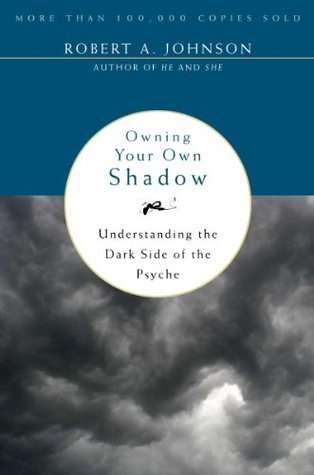More on this book
Community
Kindle Notes & Highlights
Read between
November 25 - December 2, 2024
In the cultural process we sort out our God-given characteristics into those that are acceptable to our society and those that have to be put away. This is wonderful and necessary, and there would be no civilized behavior without this sorting out of good and evil. But the refused and unacceptable characteristics do not go away; they only collect in the dark corners of our personality. When they have been hidden long enough, they take on a life of their own—the shadow life.
It is also astonishing to find that some very good characteristics turn up in the shadow. Generally, the ordinary, mundane characteristics are the norm. Anything less than this goes into the shadow. But anything better also goes into the shadow! Some of the pure gold of our personality is relegated to the shadow because it can find no place in that great leveling process that is culture.
The religious process consists of restoring the wholeness of the personality. The word religion means to re-relate, to put back together again, to heal the wounds of separation. It is absolutely necessary to engage in the cultural process to redeem ourselves from our animal state; it is equally necessary to accomplish the spiritual task of putting our fractured, alienated world back together again. One must break away from the Garden of Eden but one must also restore the heavenly Jerusalem.
I regret the prevailing attitude at present that goodness or sainthood consists of living as much as possible on the right hand, the good side, of the seesaw. Sainthood has been caricatured as an image of the all-right person, the person who has transferred everything to the perfect side of his personality. Such a condition would be completely unstable and would flip immediately. The balance would be disrupted and life would be impossible.
I agree that we must relate to the outer world with the refined product of the good side, but this can be done only by keeping the left side in balance with the right. We must hide our dark side from society in general, or we will be a bloody bore; but we must never try to hide it from ourself.
The Catholic Mass is a masterpiece of balancing our cultural life. If one has the courage to see, the Mass is full of the darkest things: there is incest, betrayal, rejection, torture, death—and worse. All this leads to revelation but not until the dark side has been portrayed as vividly as possible. If one went to Mass in high consciousness one would tremble at the awfulness of it—and be redeemed by its balancing effect. The Mass lost much of its effectiveness when it was modernized and made to serve the cultural process. One ought to be pale with terror at the Mass.*
To fall in love is to project the most noble and infinitely valuable part of one’s being onto another human being,
To make this examination all the more difficult, we have to say that the divinity we see in others is truly there, but we don’t have the right to see it until we have taken away our own projections.
To suffer one’s confusion is the first step in healing.* Then the pain of contradiction is transformed into the mystery of paradox. The quickest way I know to break a person is to give him or her two sets of contradicting values—which is exactly what we do, in modern culture, with our Sunday and Monday moralities. We are taught by Christianity to follow a set of values that are almost entirely disregarded in everyday business life. How is a person to cope?
When one is truly a citizen of both worlds, heaven and earth are no longer antagonistic to each other. Finally one sees that there was only one circle all the time. This is the true fulfillment of the Christian goal, the beatific vision so prized in medieval theology. The two circles were only the optical illusion of our capacity—and need—to see things double.


